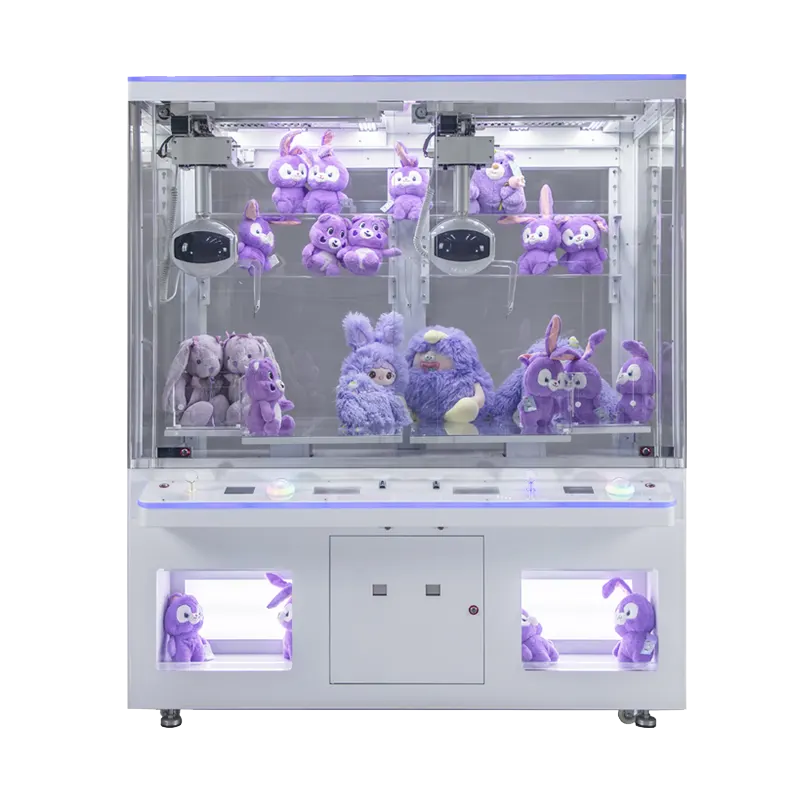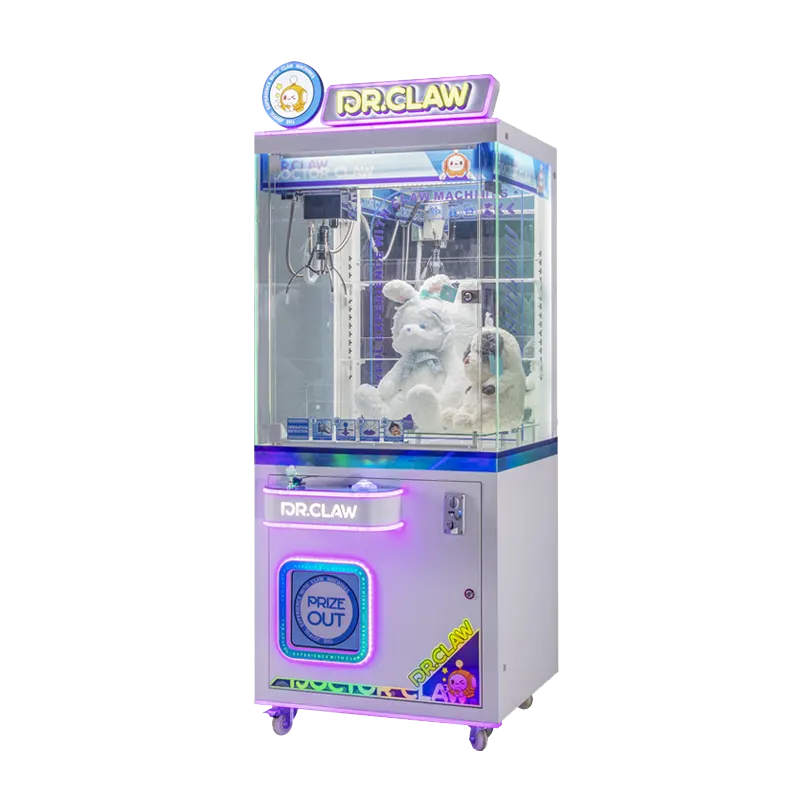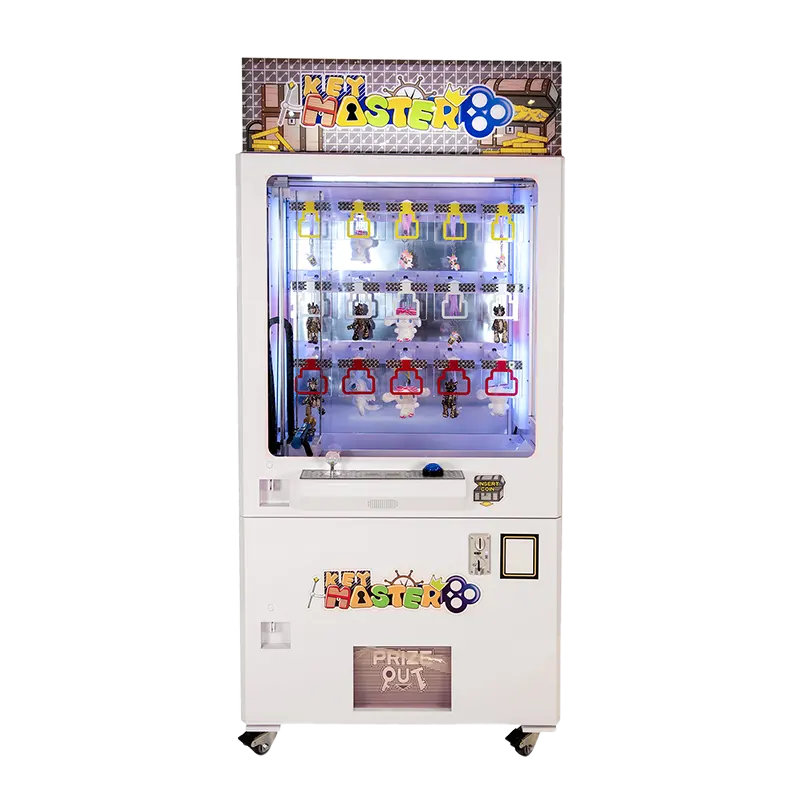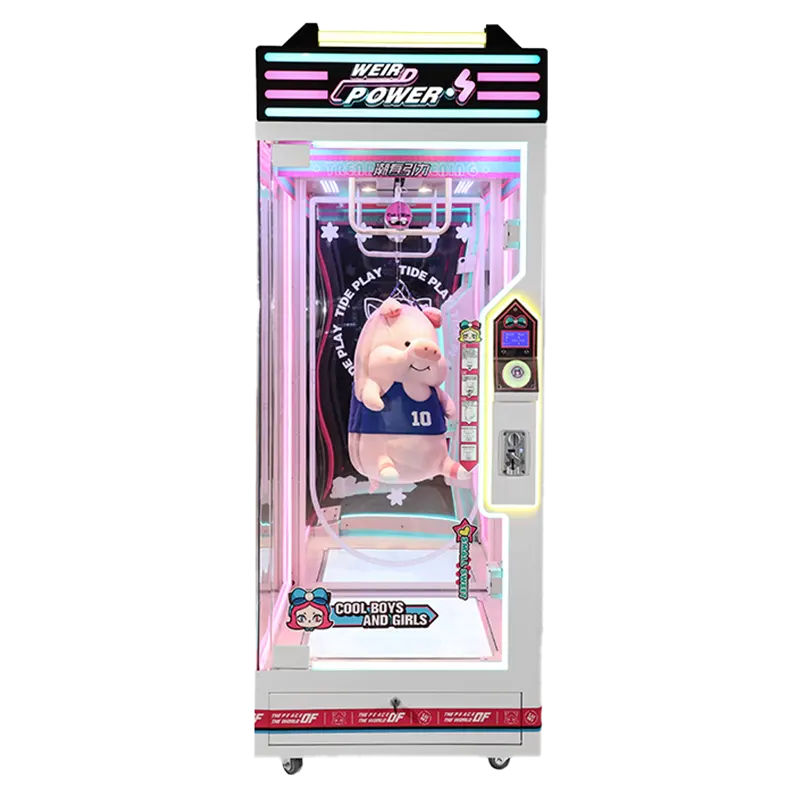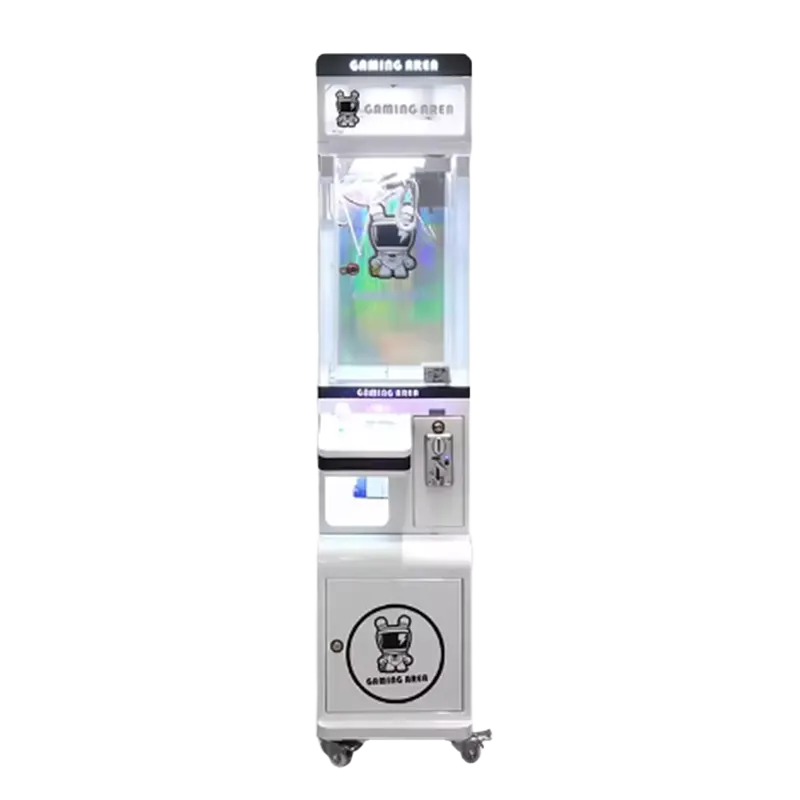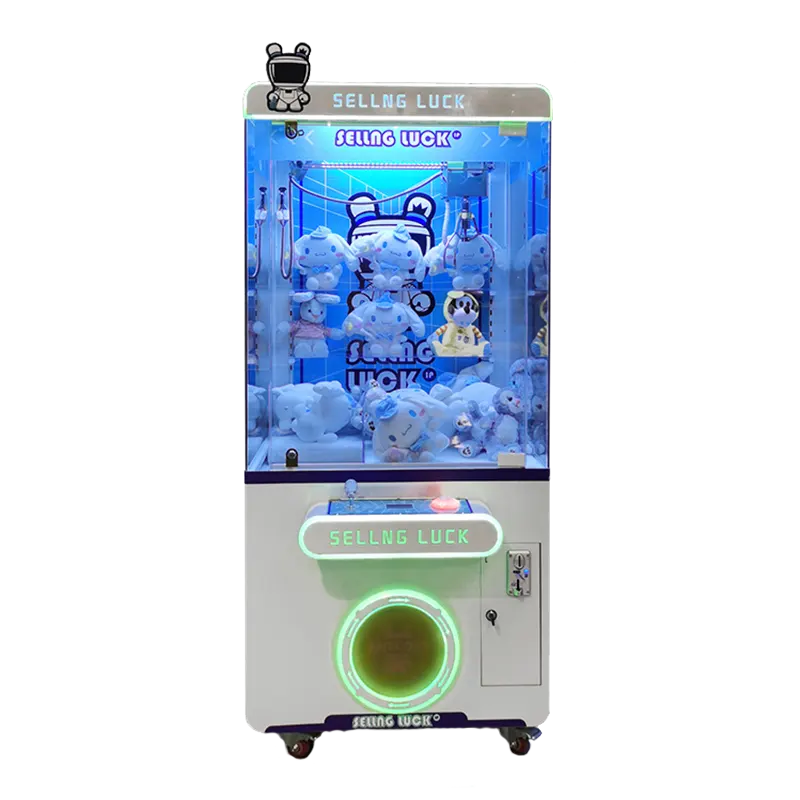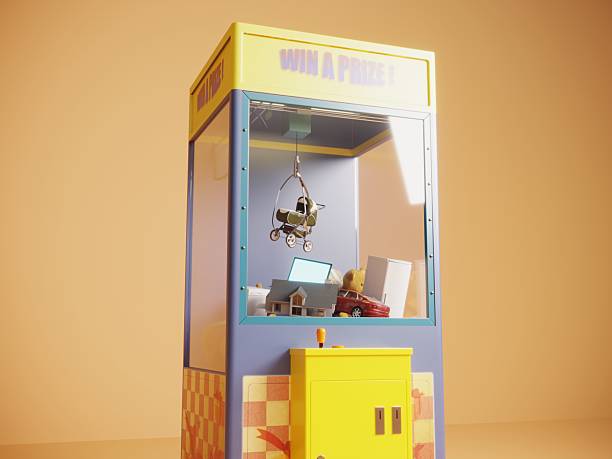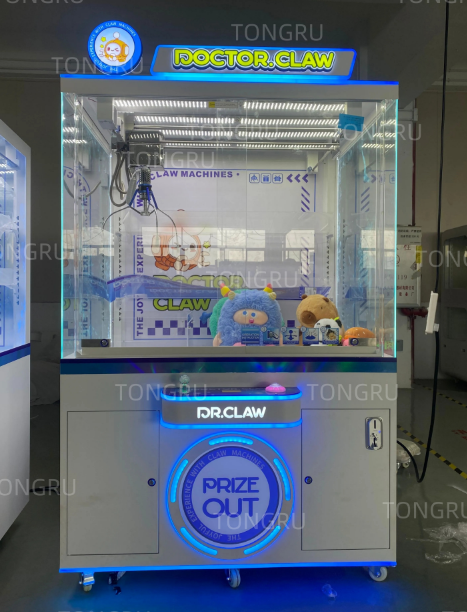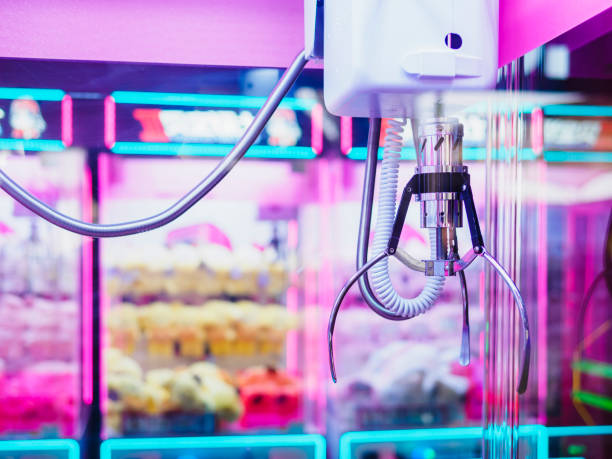Claw machines—those addictive, prize-grabbing games—have been a staple of arcades and shopping centers for decades. But how much do claw machines make behind all the flashing lights and tempting stuffed toys? Whether you’re thinking about starting a claw machine business or simply curious about their earning potential, you’re not alone. These machines can be surprisingly profitable, but a lot depends on factors like location, Preise, Preisgestaltung, and maintenance. Let’s dive into the details of what affects how much money claw machines make and whether investing in one is a worthwhile venture.
Factors Affecting Claw Machine Profit
1. Claw Machine Stores Location
Standort—it’s the golden rule for any business, and it’s no different for claw machines. Machines in high-traffic spots, like malls or amusement parks, generally pull in more players and rake in higher earnings. Im Gegensatz, a machine tucked away in a quiet corner or a low-traffic area will struggle to make much. Popular venues include arcades, grocery stores, bowling alleys, und Flughäfen. These are places where people tend to hang out and are more likely to spare a few bucks for a fun, quick game.
2. Type of Claw Machines
Nicht alle Klauenmaschinen sind gleich. The type of machine you choose can significantly influence earnings. High-tech machines with engaging features (like those that make sounds or have flashing lights) tend to attract more players, especially kids. On the other hand, simpler machines with less flair might be less expensive to maintain but may also earn less overall. The following are common types of claw machines auf dem Markt:
3. Type of Claw Machine Prizes
The prizes you offer in your claw machines can make or break your earnings.
- Low-cost prizes, like cheap plush toys or candy, are easier to stock and will likely draw in a larger crowd, but they might not generate much profit per play.
- High-value prizes, such as electronics or branded merchandise, will cost more to acquire but can justify higher prices per game.
Interestingly, when you offer a variety of prizes—especially in the “sweet spot” range, where customers feel they have a chance to win something valuable—engagement and profit can increase. Consider buying claw machine prizes bulk to save on costs while still offering attractive options.
4. Pricing Structure
The price per play can vary widely, but it’s usually somewhere zwischen $1.50 Und $3.00 pro Spiel. Typischerweise, the cost is determined by the value of the prizes inside and the common price point for the location. But here’s where the math gets interesting: if you price too high, people might shy away; too low, and you won’t cover your costs. The win rate also plays a role—machines set up to have a higher win rate (where players are more likely to snag a prize) can justify a higher price. Offering discounts or special promotions, like “play two for the price of one,” can boost traffic and earnings, especially during peak seasons.
Costs of Operating Claw Machines
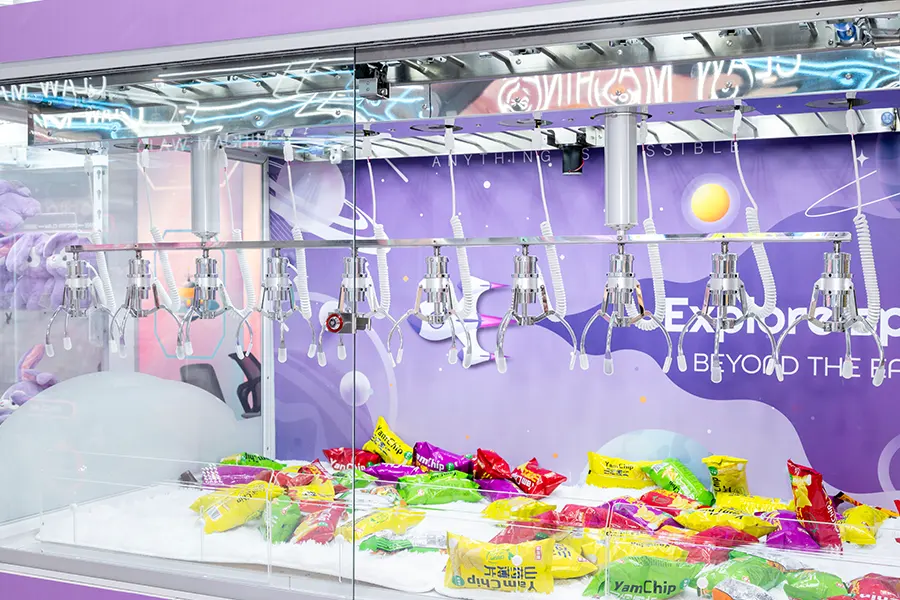
1. Initial Investment and Setup Costs
Also, how much does it cost to start a claw machine business? The answer depends on how much do claw machines cost. On average, a brand-new claw machine will cost between $150 Und $5,000. If you’re buying a used claw machine, you might find one for a bit cheaper—around $1,00 Zu $2,500.
| Arten von Klauenmaschinen(Neu) | Average Price |
| Mini-Klauenmaschine | $260 – $1,270 |
| Mittelgroße Klauenmaschine | $280 – $1,800 |
| Große Klauenmaschine | $560 – $5,600 |
| Riesige oder menschliche Klauenmaschine | $1,000 – $84,000 |
| Mini-Gashapon-Maschine | $140 – $570 |
Beyond just the machine itself, you’ll need to factor in setup costs like transporting, installing, and potentially refurbishing the machine. It adds up quickly, so careful budgeting is crucial.
2. Ongoing Operational Costs
Owning and operating claw machines isn’t all about cashing in the coins. There are several ongoing costs you’ll need to consider:
- Mieten: Abhängig vom Standort, rent for your machine could range from $1,000 Zu $10,000 pro Monat. High-traffic areas will likely come with a steeper price but offer a better chance for earnings.
- Dienstprogramme: Electricity bills will vary, but you can expect to pay anywhere from $200 Zu $1,000 per month to power the machines and the surrounding lights.
- Wartung: Machines need regular maintenance to keep them working smoothly. This can cost between $0 Zu $100 per month per machine.
- Personalbesetzung: If you hire staff to manage the machines, you’re looking at wages between $2,000 Und $4,000 pro Monat, depending on the number of employees.
Average Earnings of Claw Machines
Now for the juicy part—how much money do claw machines make on average?
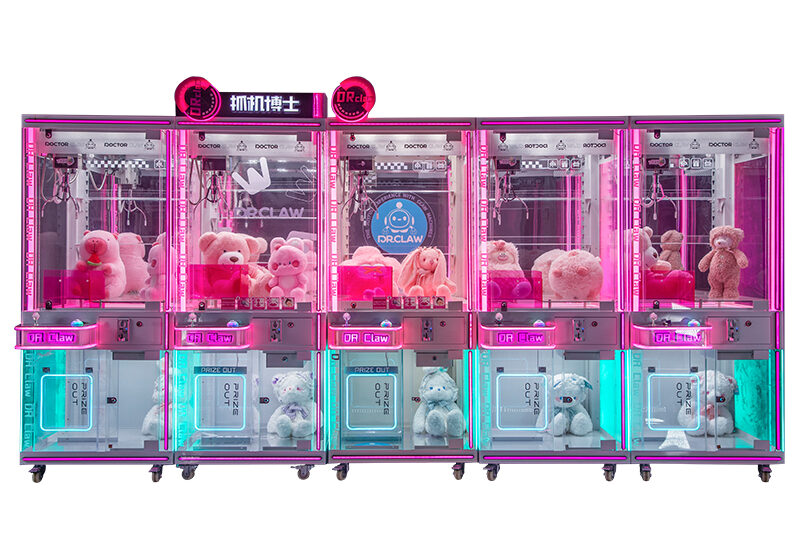
1. Typical Earnings Per Month
On average, a well-placed claw machine can bring in between $200 Und $500 pro Woche. Wenn ja 10 Maschinen an einem Standort mit mittlerem Verkehrsaufkommen, each earning around $10 pro Tag, you could potentially make $3,000 pro Monat. Place your machines in prime locations, and that number could climb to over $6,000 einen Monat. Bigger and busier venues like arcades or theme parks could see revenue skyrocket, with some machines generating over $1,000 pro Woche.
2. How Much Does a Single Claw Machine Make in a Day?
A single claw machine’s daily earnings vary depending on its location, the type of prizes, and how busy the venue is. On average, a good machine in a medium-traffic location can make anywhere from $10 Zu $50 ein Tag. In a bustling area, like a busy mall or tourist attraction, it could be even higher. Aber denken Sie daran, even in a prime location, factors like time of year or special events can influence how much money a claw machine makes each day.
3. Seasonality and Special Events
Just like most businesses, claw machines have their busy and slow seasons. Holiday periods and summer months typically see more foot traffic, which means more players and higher profits. Special events, like festivals or grand openings, can also give your machine a huge boost. Zum Beispiel, if you’re in a mall during a holiday shopping spree, you can expect your machines to make a lot more than they would during a typical week.
Claw Machine ROI Free Calculator
🧮 Claw Machine ROI Calculator
Want help sourcing a reliable claw machine at the best price? Contact our team — we’re happy to help!
Market Analysis
Japan Market
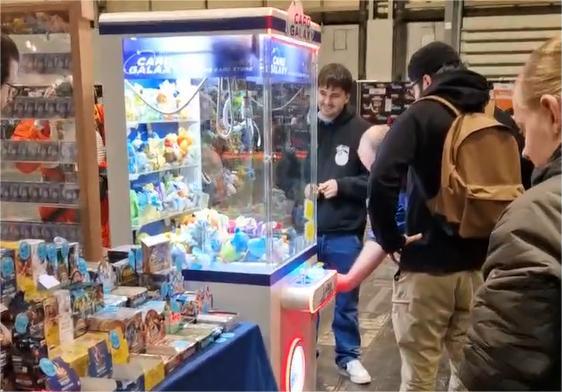
Overview:
Japan is one of the hottest markets for claw machines. Despite an overall decline in the arcade business, claw machines are still a fan favorite. On average, a single machine can pull in 1.5 million yen a year, though this varies depending on location, store setup, und Strategie. You’ll need to dig into the cost breakdown to get the full picture.
Cost Breakdown:
Equipment & Maintenance Costs
- A claw machine typically costs between 100,000 Und 300,000 yen, depending on the brand and features. Second-hand ones are cheaper.
- Maintenance and repairs add up too: about 3,000–5,000 yen per machine per month. That covers fixing mechanical issues, electricity (3–5 kWh per day), and software updates.
Mieten
- If your shop’s in a busy area like Yokohama’s Minato Mirai, rent gets pricey and takes a big chunk of your costs. In quieter suburban spots, it’s much lighter on the wallet.
- Prime Location (Minato Mirai, Z.B., World Porters Mall with Bandai Namco Cross Store): 80,000–120,000 yen per tsubo (about 3.3 m²) pro Monat, eating up 20%–25% of revenue.
- Secondary Location (Chinatown or Isezakicho Tourist Area): 50,000–80,000 yen per tsubo per month, better for smaller shops.
Labor & Operational Management
- You’ll need staff to manage the shop, restock prizes, and help customers. Labor in Japan isn’t cheap, so it’ll impact your profits.
- Personalbesetzung: A shop with 30 machines needs 2–3 employees. At 1,200–1,500 yen per hour, that’s 720,000–1.35 million yen a month.
- Operationen: Inventory management, event planning, and machine tweaking take up 10%–15% of total costs.
Preiskosten
- Prizes are usually hot IP toys, plushies, or gadgets. High-cost prizes shrink your margins, but popular ones can draw more players and boost turnover.
- Regular Plushies: 500–1,500 yen each (unlicensed toys), with a 40%–60% profit margin.
- IP Prizes (Z.B., Demon Slayer or Jujutsu Kaisen merch): 3,000–8,000 yen each, 30%–50% margin, plus 10%–15% IP licensing fees.
- High-End Prizes (Z.B., Nintendo Switch or collab electronics): 30,000–50,000 yen each, used to make the shop more appealing, with a 20%–30% margin.
Marketing & Events
- Online Ads: Facebook and Instagram ads run 50,000–100,000 yen a month.
- Offline Events: Themed collabs (like Gundam model displays) or cosplay interactions cost 100,000–300,000 yen per event but can boost foot traffic by 30%–50%.
Other Costs: Don’t forget electricity, insurance, taxes, and other operational expenses—they all add up.
Profit Breakdown:
Let’s say a single machine makes 1.5 million yen a year. After costs, the net profit is around 30%, oder 450,000 yen. For a shop with 20 Maschinen, das ist 30 million yen in annual revenue. After rent, labor, and prizes, you’re looking at 5–10 million yen in yearly profit.
Return on Investment (ROI):
Initial costs (Maschinen, rent deposit, decor, usw.) can run into millions of yen. If your annual profit is 5 million yen, you’ll break even in 1–2 years, depending on the specifics.
Profit Model & Fallstudie:
- Basic Revenue Formula:
- Per Game: Regular machines charge 100–200 yen per play; hot IP machines charge 300–500 yen.
- Success Rate: 8%–15% on average.
- Monthly Revenue Per Machine: Regular machines make 100,000–150,000 yen (50–80 plays a day); IP machines make 200,000–300,000 yen.
Fallstudie: Minato Mirai Shop with 20 Maschinen
| Item | Menge (Monatlich) | Proportion |
|---|---|---|
| Prize Cost | ¥900,000 (30%) | 30% |
| Mieten | ¥600,000 (20%) | 20% |
| Labor Cost | ¥900,000 (30%) | 30% |
| Wartung & Marketing | ¥300,000 (10%) | 10% |
| Reingewinn | ¥300,000 (10%) | 10% |
Anmerkungen:
- Having 40% hot IP machines can raise your average ticket price, but it bumps up prize costs.
- Weekends and holidays can double revenue, pushing profit margins to 15%–20%.
- A loyalty system (Z.B., spend 1,000 yen, get 1 free coin) can boost repeat visits by 20%.
Summary:
Claw machines in Japan are still a solid money-maker. With good management and a great location, top shops can net 3–5 million yen a year. But success hinges on location, IP strategy, and cost control. If you’re starting out, try 20–30 machines, focus on niche markets (like female-oriented IPs or limited-edition items), and use data to keep tweaking your approach.
U.S. Market

Cost Structure and Profitability Analysis – Key Costs
| Item | Cost Range (USD) | Description |
|---|---|---|
| Equipment | $600 – $3,000 per unit (new) | Standard machine costs approx. $900/unit. Used machines can save 30%–50%. |
| Mieten | $1,000 – $20,000/month | In prime areas (Z.B., Times Square NYC), rent per m²/month can reach hundreds; in small/medium cities, $1,000–$5,000. |
| Labor | $2,240 – $4,800/month (FT) | Based on U.S. minimum wage; cost for two full-time staff per month is $2,240–$4,800. |
| Preise | $3 – $100/unit (Regular/IP) | Basic plush toy cost around $3; popular IP-licensed toys can reach over $100/unit. |
| Others | $200 – $1,000/month (Dienstprogramme) | Includes water/electricity, insurance, and marketing costs. |
Profit Model:
- Per Game Revenue: Games typically cost $1.50–$3. Mit 30 machines averaging 50 plays a day, monthly revenue can hit $67,500–$135,000.
- Prize Cost Control: Regular plushies take up 10%–15% of revenue; IP dolls can take 30%+. Adjusting grab rates (Z.B., 1 win every 20 Versuche) can boost margins.
Added Value:
- Membership Plans: Offer monthly or quarterly passes for unlimited plays or discounts.
- Online-Offline Integration: Use an app for remote claw games or point redemption to expand revenue streams.
Profit Case Study:
NYC Trendy Shop: In a prime area, 40 machines bring in $135,000 einen Monat. After rent, labor, and other costs, monthly profit is around $56,200, with a 3–6 month payback period.
Key Success Factors:
1. Location Strategy
- High-Traffic Spots: Malls, Vergnügungsparks, or college towns with steady foot traffic.
- Cost Balance: Prime spots have high rent but big revenue potential. Keep rent under 30% of revenue.
2. IP & Prize Design
- Hot IPs: Collab with Disney, Marvel, usw., to draw crowds.
- Unique Prizes: Add blind boxes or figurines to boost repeat plays.
3. Operationen & Marketing
- Events: Holiday promos or themed events (Z.B., “Valentine’s Day specials”).
- Social Media: Post claw machine videos on TikTok or Instagram to attract younger players. Stand Out: Avoid blending in—think themed shops!
4. Tech Upgrades
- Smart Management: Monitor machines and inventory in real-time to streamline operations.
- Mobile Payments: Add QR code payments to cut maintenance costs.
Abschluss & Recommendations:
Running a claw machine shop in the U.S. has solid profit potential, but you’ll need to check these boxes:
- Smart Location Choices: Prioritize high-traffic spots where young people hang out.
- IP & Prize Innovation: Mix in popular IPs and unique designs to make your machines irresistible.
- Tech -Integration: Bring in smart devices and mobile payments to streamline operations.
- Risk Management: Plan your costs wisely to handle competition and policy shifts.
If you nail these strategies, a U.S. claw machine shop can break even in 3–9 months and keep the profits rolling in for the long haul.
Claw Machine Business Potential
1. Is the Claw Machine Business Profitable?
Ja, Die claw machine business can be highly profitable. The key is finding the right locations and stocking your machines with appealing prizes. Profit margins vary, but most claw machines have a decent return on investment once they’re up and running. With a solid strategy, you can break even in a few months and start making real profits.
2. How to Scale a Claw Machine Business?
Once you’ve mastered running one machine, why not scale? Expanding your claw machine empire means more locations and potentially more earnings. Start by identifying high-traffic spots, negotiating with venue owners, and optimizing your machines to boost their profitability. As your business grows, you can diversify the types of prizes, adjust pricing strategies, and even experiment with different machine styles to maximize earnings.
Abschluss
Also, Wie viel verdienen Klauenmaschinen?? How do claw machines work? The answer depends on several factors, including location, the type of machine, prize selection, and pricing strategy. While the initial investment and ongoing costs can add up, claw machines can be surprisingly profitable if placed in the right spots. With careful planning, smart choices, and a little bit of luck, running a claw machine business can be a rewarding venture. Whether you’re just curious or looking to buy a claw machine, now you know what kind of earnings to expect and how to make the most of it.
Buy Claw Machines at Factory Direct Prices
If you want to start a claw machine business, don’t hesitate to reach out to a custom crane machine manufacturer for expert guidance and top-quality machines. Tongru, etabliert in 2015, is a leading manufacturer and service provider specializing in claw machines for Spielgeschäfte, arcades and FECs. Tongru offers comprehensive one-stop services that cater to the unique needs of each client. Whether you’re looking for OEM & ODM claw machines or seeking bespoke designs, Tongru’s independent R&D capabilities ensure top-tier innovations.
FAQs
- How much does a claw machine make in a week? Claw machines can earn anywhere from $200 Zu $1,000 pro Woche, depending on location, traffic, and prizes.
- What are the best locations for placing claw machines? High-traffic areas like malls, Vergnügungsparks, Arkaden, and airports are ideal spots to place claw machines.
- Can you make a full-time income with claw machines? Ja, with the right setup and multiple machines in busy locations, a claw machine business can generate a full-time income.
- How much should I charge per game to make a profit? Most claw machines charge between $1.50 Zu $3.00 pro Spiel, depending on the value of the prizes and location.
- What are the most profitable prizes to put in a claw machine? Popular and visually appealing prizes, like branded toys, Elektronik, or limited-edition items, tend to attract more players and boost profits.












